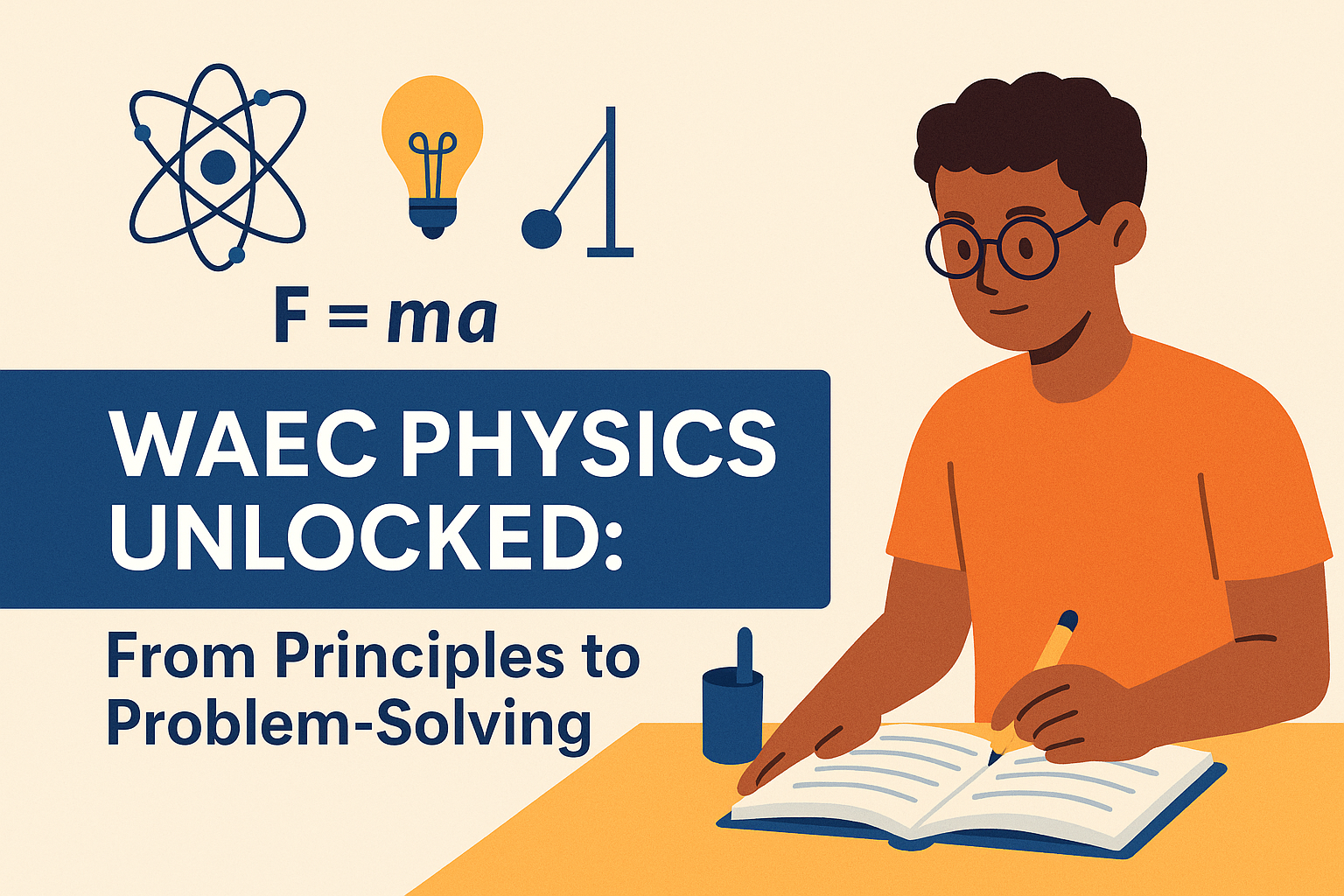1. Introduction
WAEC Physics evaluates students’ mastery of fundamental physical laws, their application in problem-solving, and practical laboratory skills. High scores require conceptual clarity across mechanics, waves, electricity, optics, and thermodynamics, coupled with exam-smart techniques.
This article unpacks the WAEC Physics syllabus, highlights question formats, and provides targeted strategies for deriving formulas, interpreting experiments, and tackling numerical problems efficiently. You’ll learn how to balance theory with practice to navigate the Physics paper confidently.
Let’s break down the forces, fields, and formulas that make WAEC Physics approachable and high-scoring.
2. Deep Dive: Syllabus & Topic Breakdown
2.1 Mechanics
- Kinematics: Motion graphs, SUVAT equations.
- Dynamics: Newton’s laws, friction, circular motion.
- Energy and Power: Work-energy theorem, conservation of energy.
2.2 Thermal Physics
- Temperature vs Heat: Specific heat capacity.
- Gas Laws: Ideal gas equation, laws of thermodynamics.
2.3 Electricity and Magnetism
- Electrostatics: Coulomb’s law, electric fields.
- Current Electricity: Ohm’s law, circuit analysis.
- Magnetism: Magnetic fields, electromagnetic induction.
2.4 Waves, Optics, and Modern Physics
- Waves: Properties, sound waves, Doppler effect.
- Optics: Reflection, refraction, lens formula.
- Radioactivity: Decay laws, half-life calculations.
3. Exam Strategy Tips
3.1 Structured Problem-Solving
- Identify: List knowns and unknowns.
- Plan: Select relevant formula.
- Solve: Show key steps; keep track of units.
- Review: Check dimensional consistency.
3.2 Practical and Experiment Questions
- Label diagrams clearly; list procedural steps accurately.
- Note independent, dependent, and control variables.
3.3 Data Interpretation
- Describe trends in graphs before analysis.
- Reference axis labels and units in answers.
3.4 Time Management
- Allocate ~20 minutes per section.
- Flag multi-step calculations for review if time allows.
3.5 Exam-Day Preparation
- Pack all approved materials: rulers, calculators.
- Stay calm with deep-breathing exercises.
4. Subject-Specific Overview
4.1 Mechanics Applications
- Use vector diagrams and free-body diagrams to visualize forces.
4.2 Thermal Concepts
- Relate theoretical laws to everyday phenomena (car engines, refrigeration).
4.3 Circuit Analysis
- Simplify circuits step-by-step; practice reading circuit diagrams.
4.4 Wave and Optics Experiments
- Understand setup for lens and prism experiments; note ray paths.
5. Practice & Resources
5.1 Textbooks
- Comprehensive WAEC Physics by Standard Publications
- Objective Physics by Africana-FEP
5.2 Online Platforms
| Resource | Features | Access |
|---|---|---|
| Physics Galaxy | Video lessons, problem sets | Free/Paid |
| myCBTPrep | Timed mock exams | Free/Paid |
| HyperPhysics | Concept overviews and maps | Free |
5.3 Mobile Apps
- Physics Lab: Virtual experiments.
- Wave Studio: Wave simulations.
5.4 Mock Exam Strategy
- Bi-weekly full WAEC practice.
- Analyze performance by topic; refine focus.
6. Conclusion
Mastering WAEC Physics demands strong conceptual understanding, practical exam strategies, and disciplined practice. By deepening your grasp of mechanics, thermal physics, electricity, and optics and reinforcing with targeted mock exams you’ll improve both speed and accuracy.
Begin today: solve ten numerical problems and label one experimental setup. With consistent effort and the strategies outlined, you’ll be well-prepared for WAEC Physics success.
